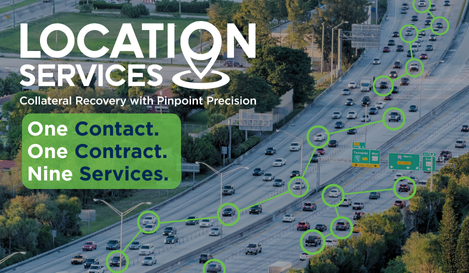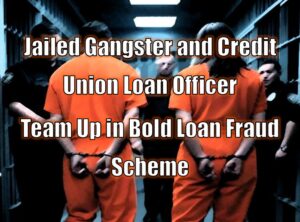
Guest Editorial
When the words “bank”, or “lending institution” are mentioned, what “images” do these words conjure up in the minds of most people? Trust, confidence, a place where Professionals advise you on matters of money and finance. A place where your money is safe because you are dealing with trained, bank certified professionals.
Banks and lending institutions spend millions of dollars on building and sustaining this image of trust and confidence, and a great portion of that money is spent on training and certification of competency for their employees.
What is my point? Compare OUR perceptions of banks and lending institutions to THEIR perceptions of US. Get the picture?
Since the lending industry is our client, if we are serious about building a lasting and profitable collateral recovery business, we must endeavor, continuously, to project the SAME IMAGE TO THEM. We must work constantly to ensure that their perception of the collateral recovery specialist is that of a highly trained and skilled, certified professional.
And how do we accomplish this? Just as the lending community requires their employees to demonstrate their knowledge, ability and professionalism through recognized curriculums of study, we must also avail ourselves of recognized training and professional certification programs that demonstrate OUR professionalism.
Just what is certification? Professional certification programs have existed since the Middle Ages, when the 13th Century Emperor, Fredrick 11 developed a “credentialing” program for physicians.
In the United States, the earliest certifications programs appeared in the field of education. For individual members of a profession, certification identifies qualified practitioners, ensures recognition of their expertise, and assists in a practitioner’s development and self-improvement by offering a curriculum of knowledge and establishing professional standards.
Certification also provides added protection to clients and employers, enhances the prestige of the profession and establishes standards or levels of competency and performance. In the self-help collateral recovery process, where the creditor is liable for the acts of the collateral recovery specialists they hire, our “credentials” of professional competency are of great importance.
What criteria distinguishes a competent, certified professional? In a survey by Mr. Jerry W. Gilley, an assistant Professor at the College of Business Administration, University of Central Arkansas, more than three quarters of those surveyed rely on one or more of nine factors. Of those nine factors, participants view experience, written tests, and completion of a program of study, (certification) as the most important.
There is an abundance of evidence that certification programs enhance image, professionalism, and increase proficiency in any industry.
The self-help recovery of defaulted collateral is serious business, and can easily result in serious injury to the recovery agent or debtor, serious damage to the recovered collateral, or both. Education, training, (certification) and experience are critical factors in the success, or failure of the collateral recovery specialist, not only in the field, but also in soliciting clients.
Insurance carriers also recognize the importance of professional certification within the collateral recovery profession and are beginning to require proof of professional credentials from those they insure.
As professional businessmen and women building our future, we all want the same thing; to maximize our “bottom line” by reducing our overhead and increasing our client base. Statistics clearly prove that recognition as professionals by our clients is an important factor in our success. Your professional credentials and the “image” you project to your clients will be a most important part of the success of your business.
For information on where and how to obtain the latest professional training and certification programs, please visit us at www.RiscUS.com.
Have a Great Year and,
Be Safe
Joe Taylor











Actions on social media and at convention can ruin your business. If you think clients do not watch and take notes, then you are behind already. Actions for out way image. Do what you say when you say you will and success will follow. a $1,000.00 suit does not mean you are a good business man. Clean attire and hard solid work is the key to success. Using your brain and not your bottom line will keep you safe.
Your actions on social media and at conventions can out way your actions in the field. If you think the clients do not pay attention everywhere you are already too late. Doing what you say when you say you will goes way further than a $1,000.00 suit. I am not saying you should look like you sleep under your truck, but a fancy appearance does not make you a good company.
As an accepted “Expert Witness” in the recovery industry I can assure you that Joe Taylor is 100% correct in his missive on professionalism. When preparing an opinion for the courts one of the first things I look at are the credentials held by the recovery agent(s) involved. There are several recognized credentialing programs including but not limited to RISC’s CARS, NFA’s CCRS, TFA’s PCP, Eagle Group XX’s MPRS and ARA’s web seminars. These programs are designed to enhance the professionalism of your agency and your employees and the image these training programs create are a valuable asset when a time of need arises.
You don’t get a second chance to make a first impression!
Your image and reputation are everything in this business.